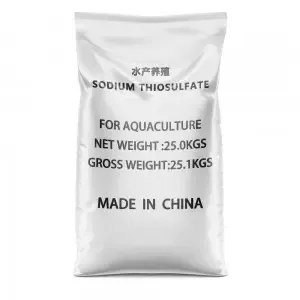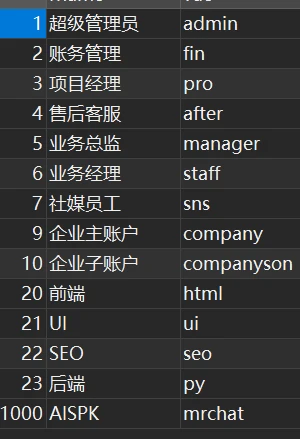



Safe Handling Sodium Hydroxide Solutions – Superior Protection & Efficiency
- Introduction to Handling Sodium Hydroxide
- Understanding Sodium Hydroxide and Its Industrial Relevance
- Technical Challenges and Solutions for Safe Sodium Hydroxide Handling
- Vendor Comparison: Equipment & Solutions for Sodium Hydroxide Handling
- Tailored Handling Solutions: Customization for Different Industries
- Real-World Applications and Case Studies
- Conclusion: Best Practices for Handling Sodium Hydroxide

(handling sodium hydroxide)
Introduction to Handling Sodium Hydroxide
Sodium hydroxide, sometimes referred to as caustic soda, is a critical chemical component with widespread applications across various sectors. Given its highly corrosive nature, handling sodium hydroxide
poses significant challenges for industries in terms of safety, efficiency, and compliance. Today’s market demands the implementation of rigorous protocols and cutting-edge technologies to manage this substance safely and cost-effectively. This article delves into the core aspects of sodium hydroxide handling, offering insights that support optimized operations for manufacturers, chemical processors, and all stakeholders involved in its lifecycle.
Understanding Sodium Hydroxide and Its Industrial Relevance
As an alkaline compound with the formula NaOH, sodium hydroxide serves as a backbone for industries such as paper, textiles, petrochemicals, water treatment, and food processing. Global production exceeds 70 million metric tons annually, with the Asia-Pacific region accounting for more than 50% of consumption (source: International Chemical Trade Statistics, 2023). Major commercial applications include pH regulation, cleaning and degreasing agents, and the manufacture of soaps and detergents. Due to its reactivity, improper handling can result in equipment damage, personnel injury, and costly downtime. This underscores not only the operational importance but also the market imperative for robust sodium hydroxide safety protocols.
Technical Challenges and Solutions for Safe Sodium Hydroxide Handling
The primary risk of sodium hydroxide arises from its reaction with organic materials and certain metals, resulting in high heat generation and the release of hazardous aerosols. Dermal contact can cause severe chemical burns, while inhalation of mists may lead to respiratory distress. Facilities often encounter issues with material corrosion, component failure, and personal protective equipment (PPE) fatigue. To address these matters, leading-edge solutions such as fluoropolymer-lined tanks, automated dosing systems, and closed-loop transfer systems are increasingly adopted. According to a 2022 safety audit by the Chemical Safety Board, integrating such engineered controls reduces spill incidents by 37% compared to legacy open-transfer protocols. Material selection for pipework (e.g., PTFE, PVDF, or coated steel) ensures resistance to microcracking and long-term durability, while remote monitoring enables predictive maintenance and further enhances sodium hydroxide safety.
Vendor Comparison: Equipment & Solutions for Sodium Hydroxide Handling
Choosing the right supplier for sodium hydroxide handling solutions is crucial for reliable operation and compliance with regulatory requirements. Market analysis reveals notable variations in safety features, customization capabilities, and maintenance support. Below is a comparative overview of three leading vendors:
| Vendor | Material Compatibility | Safety Technology | Customization | After-Sales Support | Annual Incident Rate (%) |
|---|---|---|---|---|---|
| SafeChem Systems | PTFE, PVDF, Steel Coating | Automated Containment, Leak Detection | High (Bespoke Design) | 24/7 Onsite & Remote | 0.9 |
| ProMix Engineering | PVC, Polyethylene | Manual Ventilation, Spill Barriers | Moderate | Business Hours Remote | 1.8 |
| HydroGuard Solutions | Alloys, Glass Lining | Active Monitoring, Automated Shutdown | High (Turnkey Packages) | Comprehensive | 0.7 |
As indicated, vendors like HydroGuard Solutions offer the lowest annual incident rates, aided by a rich set of automation and remote monitoring features, while SafeChem Systems is praised for responsive after-sales service and material versatility. The choice of vendor should be guided by process complexity, enterprise scale, and the specific sodium hydroxide safety requirements of each facility.
Tailored Handling Solutions: Customization for Different Industries
Sodium hydroxide handling is not a one-size-fits-all process. Industries differ in terms of volume requirements, environmental regulations, temperature control needs, and downstream processing. For the pulp and paper sector, bulk storage and high-throughput transfer systems engineered with anti-corrosive linings are vital. Water utilities often prioritize compact, closed-loop dosing skids with integrated over-pressure protection and automatic shutoff. In pharmaceuticals and food production, hygienic design standards such as 3-A and FDA compliance drive demand for clean-in-place (CIP) capable systems, minimizing cross-contamination risks. Customization can also include safety-interlocked pump controls, operator training modules, and digital audit trails for regulatory inspections. When working with solution concentrations ranging from 15% up to 50%, the adaptability of both equipment and processes assures maximum efficiency, process reliability, and, ultimately, operator safety.
Real-World Applications and Case Studies
Examining successful deployments of sodium hydroxide handling systems reveals the tangible benefits of innovation. In 2023, a large-scale chemical manufacturer in the United States reported a 42% reduction in chemical exposure incidents after transitioning to a fully enclosed delivery and dosing system supplied by SafeChem Systems. For a European municipal water facility, ProMix Engineering custom-designed a modular, low-footprint transfer solution, which not only eased retrofitting efforts but also improved operator response times during alarm events by 28%. Meanwhile, HydroGuard Solutions equipped a refinery with real-time leak detection and AI-enabled predictive maintenance, resulting in two full years with zero reportable sodium sodium hydroxide spills. These implementations demonstrate that investments in advanced technology and process adaptation pay measurable safety and operational dividends.
Conclusion: Best Practices for Handling Sodium Hydroxide
In conclusion, the critical nature of handling sodium hydroxide responsibly cannot be overstated. Facilities must prioritize holistic safety programs, beginning with rigorous hazard assessment, equipment specification, and staff training. Adoption of state-of-the-art containment and dosing solutions, regular system audits, and adherence to industrial best practices collectively drive down incident rates and regulatory risk. Strategic selection of vendors, leveraging custom solutions fit for each industry’s demand, and documenting real-world success stories ensures continuous improvement. By maintaining a culture of vigilance and innovation, organizations can sustain high standards for sodium hydroxide safety and operational excellence now and in the future.

(handling sodium hydroxide)
FAQS on handling sodium hydroxide
Q: What personal protective equipment (PPE) is required when handling sodium hydroxide?
A: When handling sodium hydroxide, you should wear gloves, safety goggles, and a lab coat or apron. It is also recommended to use a face shield and work in a well-ventilated area. Proper PPE helps prevent skin and eye contact.Q: What are the main safety risks associated with sodium hydroxide?
A: Sodium hydroxide is highly corrosive and can cause severe burns to the skin and eyes. Inhalation of its dust or mist can irritate the respiratory system. Always follow sodium hydroxide safety guidelines to minimize risks.Q: How should sodium hydroxide spills be handled safely?
A: Small spills should be neutralized with a weak acid, such as vinegar, before cleaning with water. For large spills, evacuate the area and use appropriate spill containment materials. Always wear PPE when managing sodium hydroxide spills.Q: How should sodium hydroxide be stored to ensure safety?
A: Store sodium hydroxide in a tightly sealed container, in a cool, dry, and well-ventilated area. Keep it away from acids and incompatible materials. Make sure containers are clearly labeled for proper sodium hydroxide safety.Q: What first aid should be given in case of contact with sodium hydroxide?
A: Immediately flush the affected area with plenty of running water for at least 15 minutes. Remove any contaminated clothing and seek medical attention promptly. Quick response is critical when handling sodium hydroxide accidents.-
How and Why to Disinfect Water Softeners for Safe, Reliable WaterNewsNov.24,2025
-
Effective Deionized Water Disinfectant Solutions for Healthcare & Industrial UseNewsNov.24,2025
-
Commonly Used Disinfectant for Drinking Water – Global Uses & InnovationsNewsNov.23,2025
-
Chemical to Disinfect Water – Essential Solutions for Safe, Clean Drinking WaterNewsNov.23,2025
-
Blue Water Disinfectant: Safeguarding Global Water Quality with InnovationNewsNov.22,2025
-
Bleaching Powder for Water Disinfection – Affordable & Effective Water Treatment SolutionNewsNov.22,2025
-
Bleaching Powder Drinking Water: Effective, Affordable Disinfection WorldwideNewsNov.21,2025










